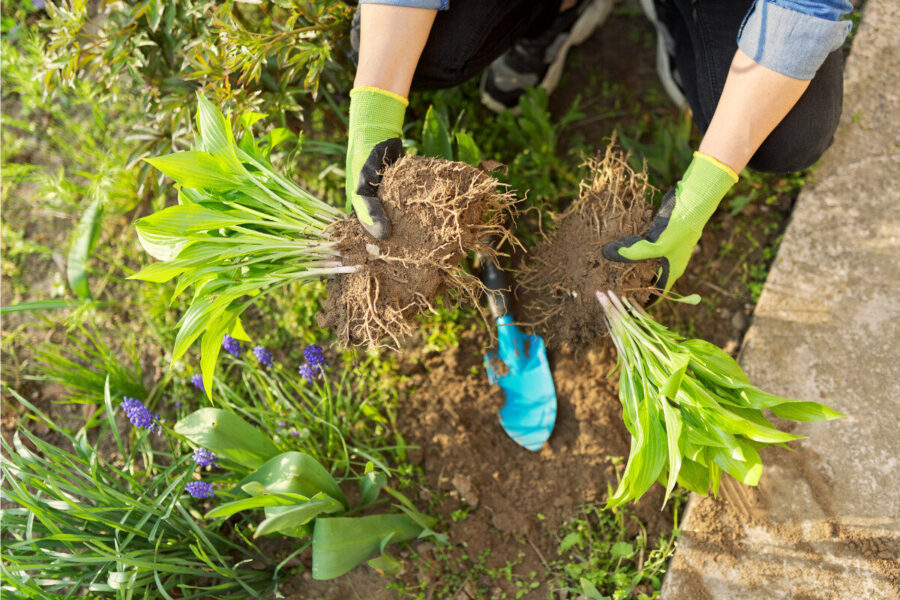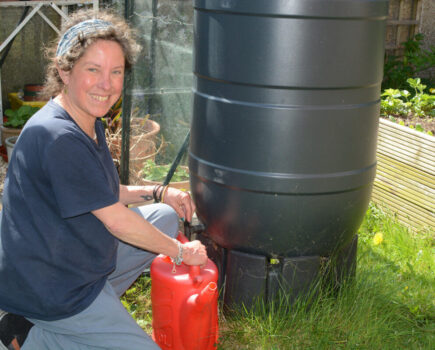Mike Palmer explains what to do now to help your garden leap into the year ahead
‘In the spring, I have counted 136 different kinds of weather inside of 24 hours’ – Mark Twain (1876)
So much has been said and written about spring and this will, no doubt, continue to be the case.
We gardeners are poised, boots placed firmly in the starting blocks, all ready for the perky pistol to fire signalling the start of a great new season. The weather, especially in April as Mr Twain so rightly pointed out, can be a little erratic, but with so much to be done and so much to see, it won’t be stopping me. I’ll just wait five minutes and it is bound to change, and hopefully for the better!
The longer and, dare I say it, warmer, blue-sky days give us the opportunity to roll up our sleeves and start gardening, so here are my top seven spring jobs:
1. Divide or buy snowdrops ‘in the green’
Depending upon where you are in the country, the drifts of snowdrops that bring the biggest smiles to our faces in late winter and early spring will be singing their seasonal swansong. Now, as they fade, is the perfect time to lift a well-established clump and divide it.
Push a trowel under the snowdrops and gently tease the clump apart. I divide a large clump into two or three smaller clumps, before digging new holes and lowering the divisions into them.
They prefer a dappled, shady location which doesn’t dry out in summer – the base of deciduous shrubs is ideal. Don’t forget to water them in and label them so you know where they are.
If you don’t have snowdrops in your garden, now is the perfect time to buy them ‘in the green’. Suppliers dispatch the snowdrops ready for planting, which allows them to establish quickly in your garden.
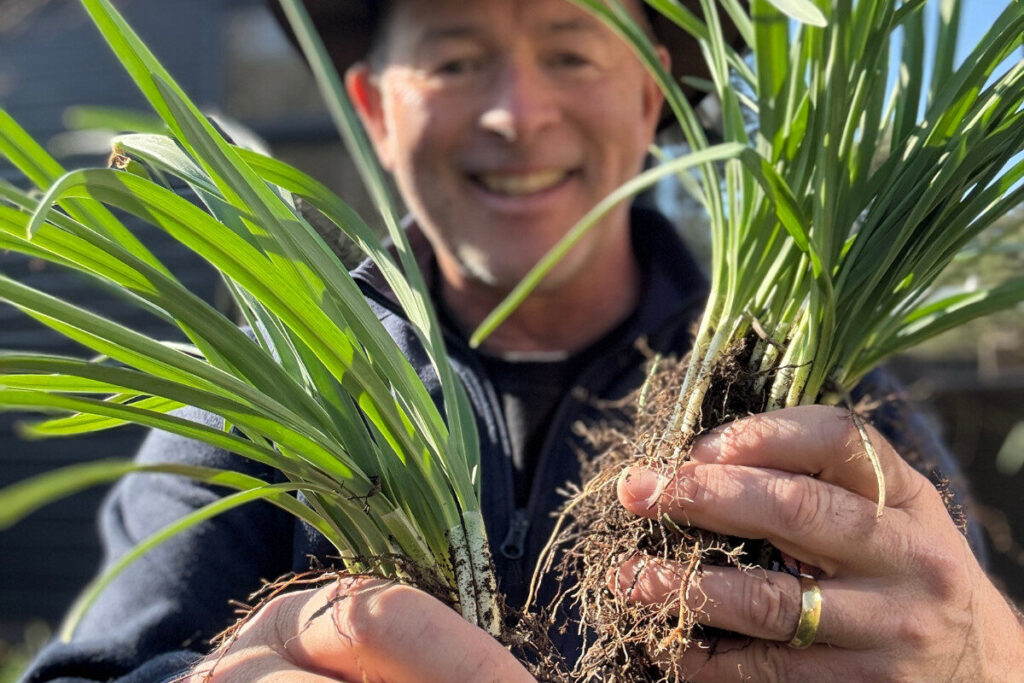
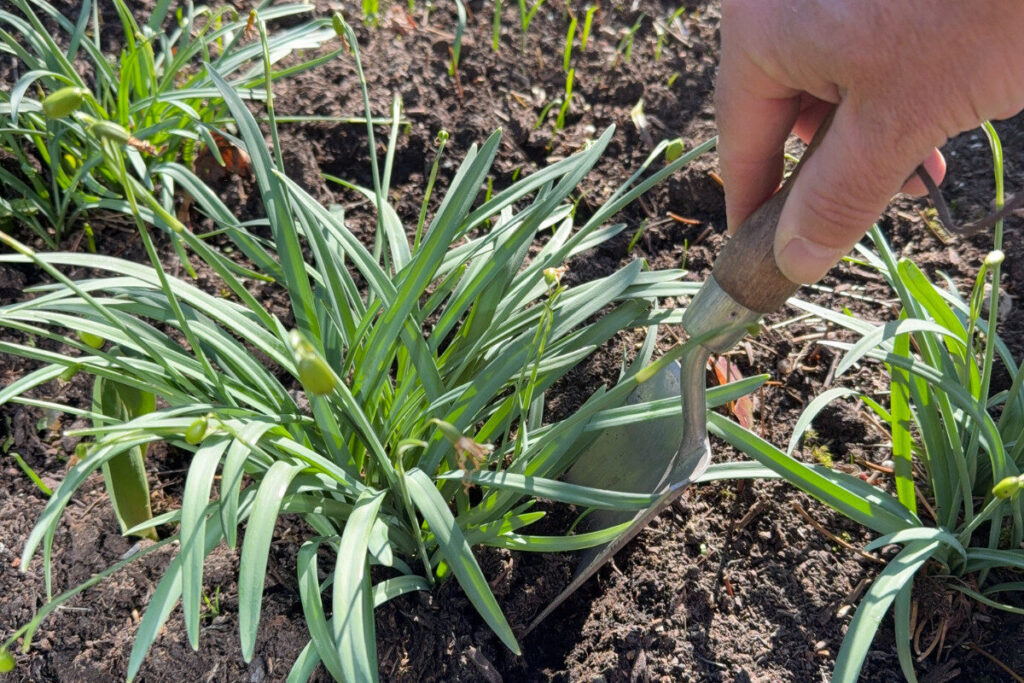
2. Feed borders
The glorious scent of daffodils, blossoms and wallflowers wafting on the spring breeze is a timely reminder to feed borders, as deciduous trees, shrubs and perennials awaken from their winter slumbers, demanding attention and food.
I used pelleted chicken manure, which will detract slightly from the sweeter-smelling scents of spring for a couple of days, but other fertilisers including seaweed-based products, or a synthetic general-purpose fertiliser like Growmore can be used. Follow the manufacturers’ instructions carefully to ensure correct application rates.
Once borders have been fed, I start to apply a liquid feed to selected ‘hungry’ perennials, including agapanthus, pelargoniums and spring bedding in containers.
3. Mulching
Once borders have been fed, spoil them further with a good mulch. It’s not the most glamorous job, but it’s one worth its weight in black gold (the term gardeners lend to well- composted organic matter).
Mulching borders with well-rotted organic matter (garden waste and horse manure, both of which can be supplied through local councils or garden centres) feeds the soil, improves soil structure, prevents weeds and locks in moisture, so it’s well worth a pair of muddy mitts when the job is finished.
Applying a thick layer of mulch (around 10cm (4in) deep) is better than a thin layer, which is less effective. Try to keep the mulch away from emerging perennials, spring flowering bulbs and the stems of trees and shrubs, as it might cause them to rot.
Go on, spoil your soil!
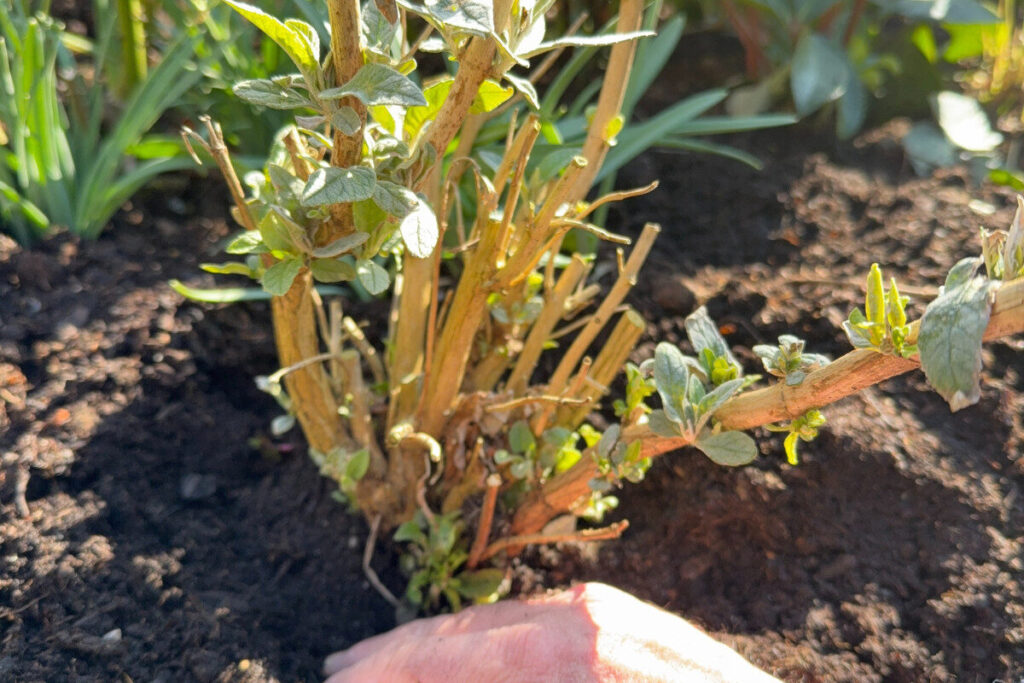
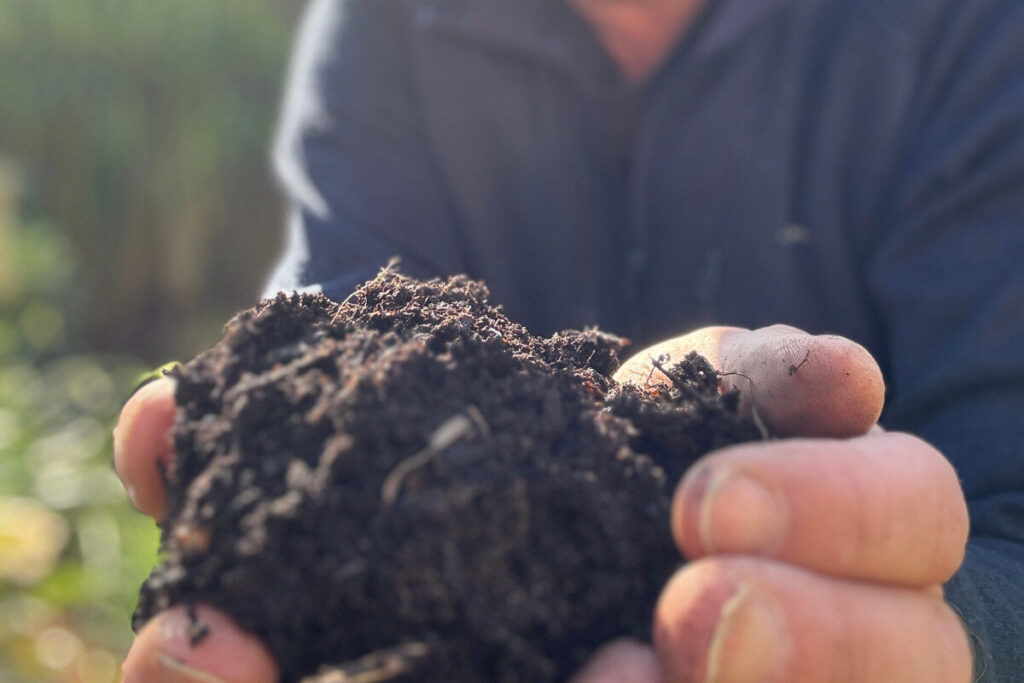
4. Roses
I always imagine, rightly or wrongly, that most of us have roses in our gardens, and now is the time to ensure those roses flourish in your borders and containers.
For too many gardeners, rose pruning is something that is needlessly feared, as it’s highly unlikely that poor pruning will result in the demise of any rose.
Check the guidelines for different roses (climbers, ramblers etc) before reaching for your secateurs. For the popular, repeat-flowering shrub roses, cut out any dead or diseased stems and prune the rose by approximately half, or to the height you need it to be in your border or container.
I always apply a handful of proprietary rose feed after pruning and water it in well.

5. Divide perennials
Who wants free plants? Who wants another easy and satisfying job? As perennials start to push through it’s time to divide established clumps, which not only results in more plants, but is also good for the health, resilience and vigour of the plant.
Dig up the clump with as much root as possible, or turn them out of their pot, carefully lifting the plant onto a tarpaulin or old sheet. I’m quite cavalier with my approach, preferring to plunge a well-positioned spade or old kitchen knife into the clump and divide it into good sized pieces.
The alternative is to place two forks back-to-back, but I can never find one, let alone two!
As long as each new division has a good root system and shoots, they’ll grow away when replanted at the same depth and watered in well. Simples!
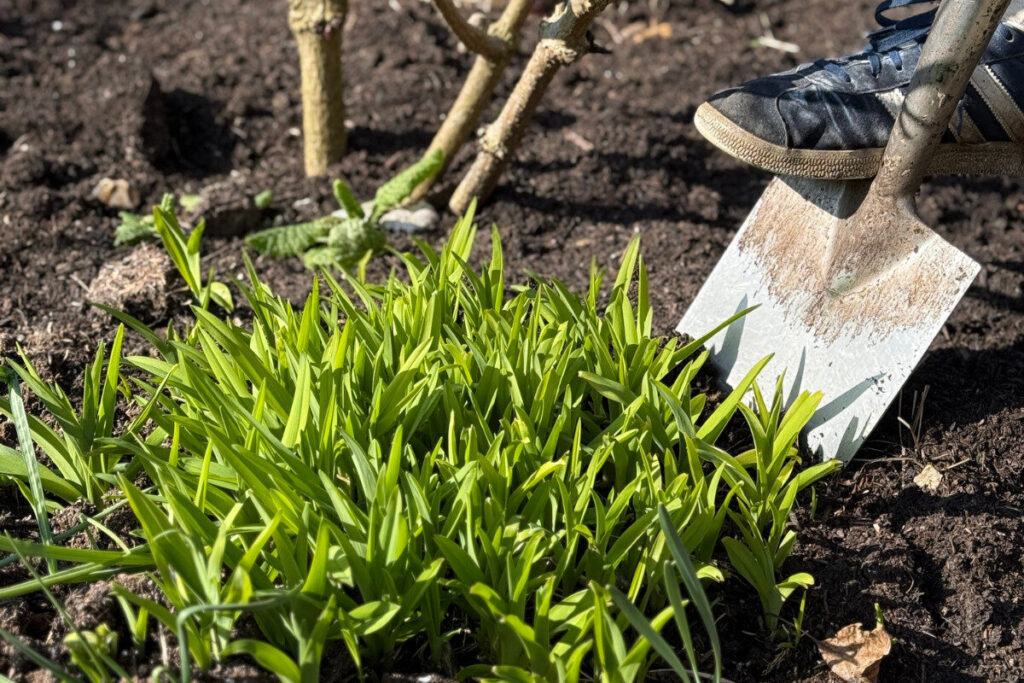
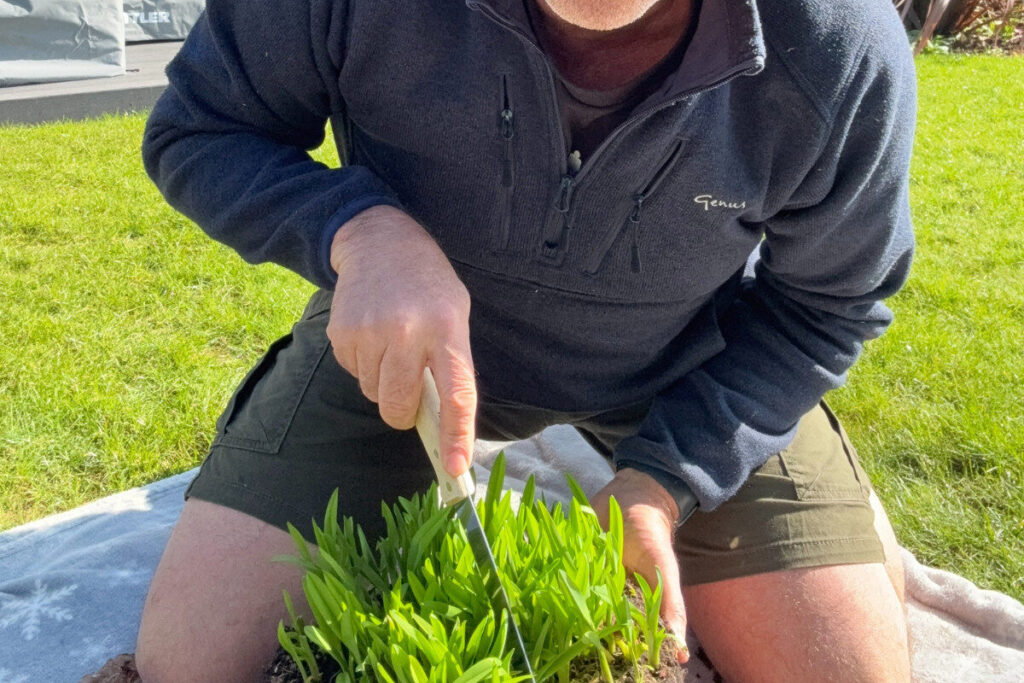
6. Cut down ornamental grasses
I haven’t mentioned grasses yet this year, but now is the time to cut down deciduous, ornamental grasses including miscanthus, calamagrostis, molinia and panicum.
Using sharp secateurs, cut down to approximately 10-15cm (4-6in). The prunings can be chopped up finely and composted.
As with the division of perennials, now is also the time to dig up and divide larger clumps as well.
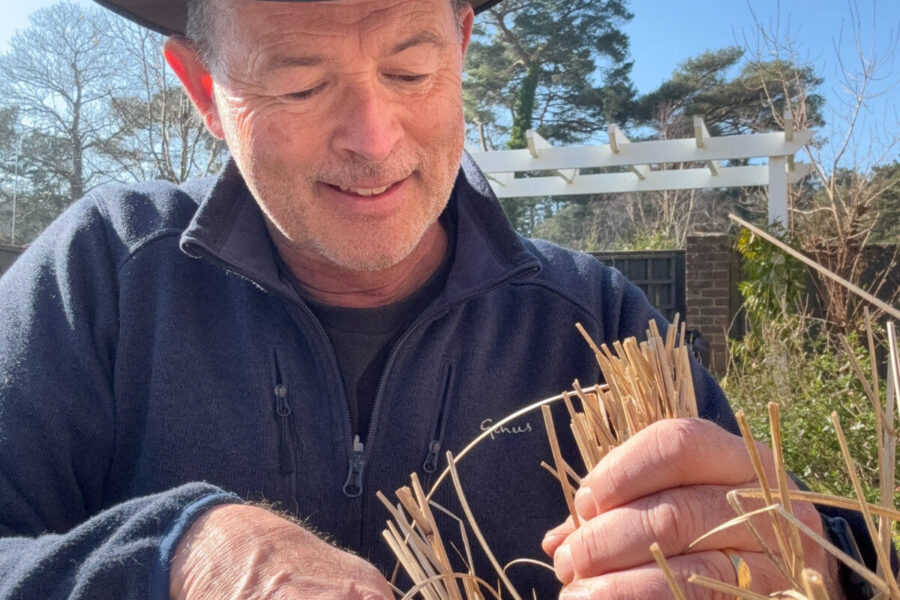
7. Look for signs of sap-sucking insects and diseases
As the days stretch out and warm up, the new, soft, nutrient-filled growth of roses, shrubs and perennials is very attractive to aphids and other sap-sucking insects. Diseases also become more noticeable in our gardens.
There are a number of environmentally-approved deterrents available now so check carefully and seek advice on the most appropriate solution.

Most importantly, please remember to take time to enjoy the beauty of this wonderful time of year – I promise you, it’ll put a spring in your step!
Find more tips, advice and articles like this at the Amateur Gardening website. Subscribe to Amateur Gardening magazine now

